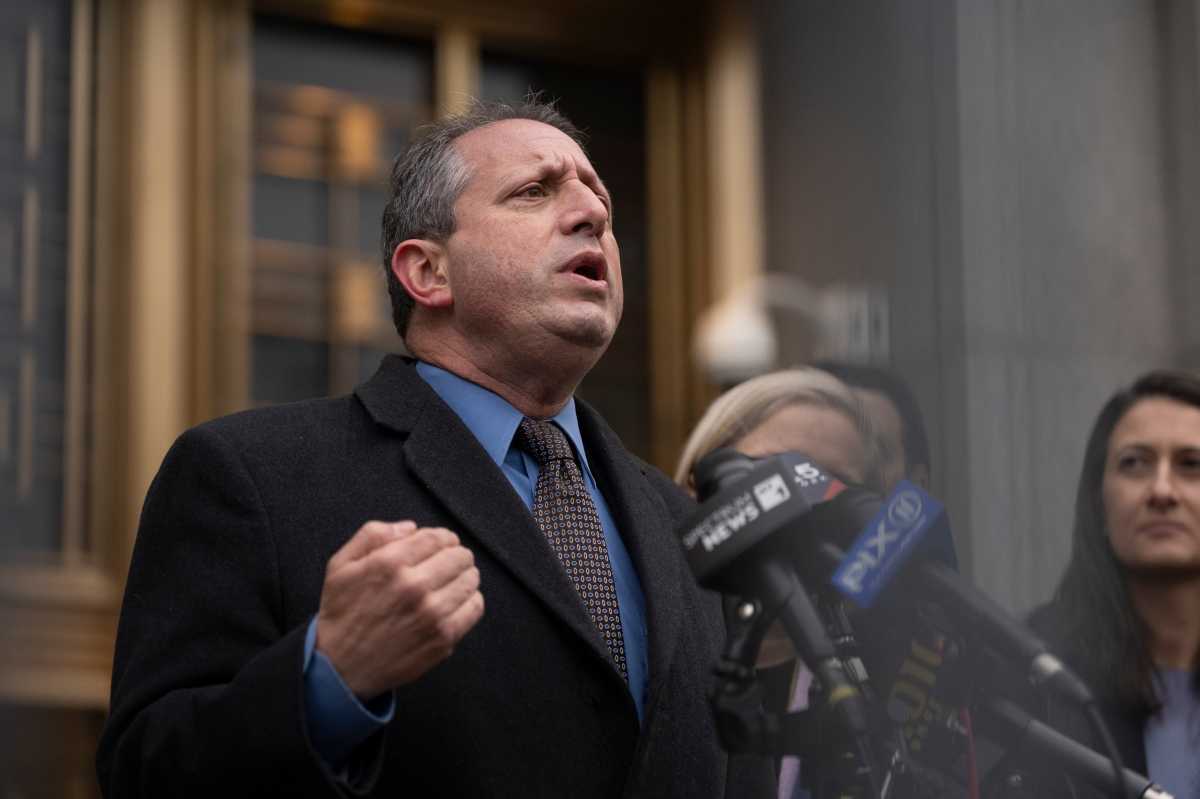– Walt Whitman
Brooklyn is drastically different now from the birthplace of American literature that Walt Whitman left behind. Arguably America’s most influential and innovative poet, Whitman created a phenomenally vivid Brooklyn rich with sound and color. One has to wonder how he would feel about today’s aspiring local writers captivated by literary intellect and manipulated into preposterously expensive MFA programs, all the while their student loans are sold to transplanted Goldman Sachs bankers. Would he consider it an expression of late-stage American romanticism?

Marking the 198th anniversary of Whitman’s birth, Greg Trupiano, the artistic director of St. Francis College’s Walt Whitman Project, held up a thin, facsimile copy of Leaves of Grass to the roughly 30 tour goers waiting at St. Francis College’s Callahan Center to explore the historical sites in Brooklyn Heights that showcased what inspired Whitman to write about the things he saw.
“I thought it was going to be more about the neighborhood,” said Monica Valhalle, 66, an urban planner from Clinton Hill. “I was pleasantly surprised. It’s such an enriching discovery to learn about Whitman and his time in Brooklyn.”
During last Wednesday’s guided tour, on one of the few warm and sunny days the borough has seen this year, the soon-to-be Whitmanologists realized how cool it was to learn that such an illustrious figure lived in Brooklyn Heights. It was almost dizzying for them to understand that Whitman was in their neck of the woods at a different time. Further, the landmark-hoppers were captivated with a tenor performance of ‘The Drinking Song’ of Giuseppe Verdi’s La Traviata, Whitman’s favorite opera, by the powerful, sinewy-voiced Bernard Holcomb, and the beautifully, dynamic readings of Whitman’s work by Lon Black.

Tour stops associated with Whitman included the Rome Brothers Print Shop where Leaves of Grass was first printed, the ‘Brooklyn Eagle’ where the author was an editor in the mid-1840s, and the Fulton Ferry, which provided inspiration for Whitman’s great poem Crossing Brooklyn Ferry.
“The performers were amazing,” said Holly Fuchs, 77, of the Society of Brooklynites. “I made sure to come today. It was so worth it to celebrate the life and work of Whitman.”
As for Walt Whitman Park, NYU professor Karen Karbiener paid tribute to Whitman by reading poems from her newly released, Poetry for Kids: Walt Whitman (Moondance Press, 2017), which she edited. “The book is poetry for kids,” said Dr. Karbiener. “But I also wanted to show Whitman’s progressive vision.”
Surveying the print shop on Henry Street where Whitman set the type for the first edition of Leaves of Grass in 1855, Whitman fans groaned at the site of a demolished Brooklyn Heights Public Library a stone’s throw away, to be redeveloped into a costly tall residential tower.
Truth be told, Whitman wouldn’t stomach this. Brooklyn is no longer the domain of rebel outliers, it’s where the biggest profiteers of them all congregate.


![image[2]](https://politicsny.com/wp-content/uploads/2017/06/image2.jpeg?quality=51&w=500)







